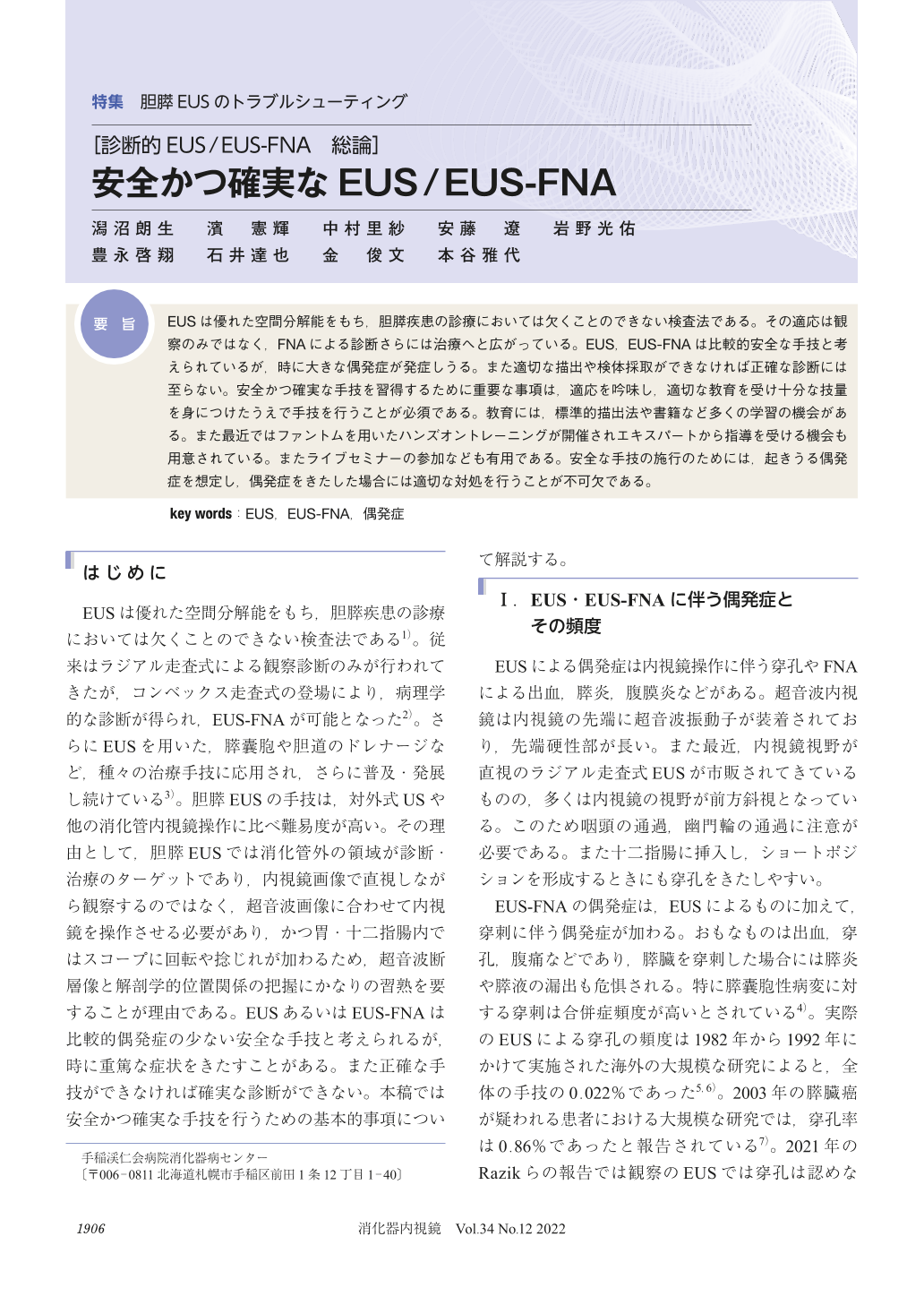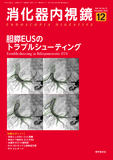Japanese
English
- 有料閲覧
- Abstract 文献概要
- 1ページ目 Look Inside
- 参考文献 Reference
要旨
EUSは優れた空間分解能をもち,胆膵疾患の診療においては欠くことのできない検査法である。その適応は観察のみではなく,FNAによる診断さらには治療へと広がっている。EUS,EUS-FNAは比較的安全な手技と考えられているが,時に大きな偶発症が発症しうる。また適切な描出や検体採取ができなければ正確な診断には至らない。安全かつ確実な手技を習得するために重要な事項は,適応を吟味し,適切な教育を受け十分な技量を身につけたうえで手技を行うことが必須である。教育には,標準的描出法や書籍など多くの学習の機会がある。また最近ではファントムを用いたハンズオントレーニングが開催されエキスパートから指導を受ける機会も用意されている。またライブセミナーの参加なども有用である。安全な手技の施行のためには,起きうる偶発症を想定し,偶発症をきたした場合には適切な対処を行うことが不可欠である。
Endoscopic ultrasonography (EUS) can obtain excellent resolution images, and it has become an important diagnostic tool for pancreato-biliary diseases. Although EUS and EUS-FNA are considered relatively safe procedures, they can occasionally cause major adverse events. In addition, accurate diagnosis cannot be achieved without proper delineation and sample collection in EUS and EUS-FNA. In order to learn safe and reliable techniques, it is essential to consider the appropriate indications, receive appropriate training, and acquire sufficient skill before performing the procedures. There are many educational opportunities available, including textbooks, hands-on training sessions using phantoms, and live demonstration seminars. To perform the procedure safely, it is essential to recognize the possibility of adverse events that may occur and to take appropriate management measures.

© tokyo-igakusha.co.jp. All right reserved.


